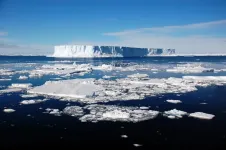(Press-News.org) The evolutionary gain and loss of plant prickles – sharp pointed epidermal outgrowths – are controlled by a shared genetic program involving cytokinin biosynthesis, researchers report. The study sheds light on the genetic basis of the emergence of similar traits in distantly related organisms and reveals genomic targets for prickle removal for crop improvement. The genetic basis of trait convergence is a central question in evolutionary biology, and the extent to which it is driven by corresponding convergence in the same underlying genetic programs across species isn’t fully understood. In plants, prickles convergently evolved in numerous plant lineages, like roses, over the past 400 million years. Despite prickles’ broad origins and diverse roles – including herbivore defense, plant competition, water retention, and climbing support – they exhibit marked morphological similarity. Moreover, prickles have been lost or suppressed in numerous other lineages. Thus, according to the authors, prickle formation in plants is an ideal system to study whether repeated origins and losses of the trait rely on the same genetic mechanisms over short and long evolutionary timescales. James Satterlee and colleagues investigated the genetic control of prickles in the genus Solanum, which includes eggplants. Combining classical genetic mapping with chromosome-scale reference genome sequencing, Satterlee et al. performed phylogenetic analysis across a diverse range of eggplants and their wild relatives, including several indigenous African crop species. The authors discovered that some species have independent mutations in a LONELY GUY (LOG)-family gene, called PRICKLESSNESS (PL), affecting the hormone cytokinin. What’s more, disruption of PL was found to drive prickle loss in at least 16 instances of prickle loss in both cultivated and wild Solanum species. Mutations in PL homologs were identified in flowering plants like rice and roses, indicating a shared genetic mechanism for prickle loss in species that diverged more than 150 million years ago. Using CRISPR-Cas9 experiments in several species, including desert raisin and tomato, Satterlee et al. found that loss of PL greatly reduces or eliminates prickles without off-target effects. Combined, the findings suggest that this genetic program underlies evolutionary widespread and recurrent instances of plant prickle formation over deep time. In a Perspective, Elizabeth Kellogg discusses the study and its findings in greater detail.
For reporters interested in research integrity issues, lead author Jack Satterlee notes, “As is standard, we have ensured that all data in the paper are available for readers and are committed to sharing all plant materials and lines generated in this work…We also respectfully acknowledge that some of the species studied here are available to us only through many centuries of Indigenous stewardship and non-Western cultivation histories. As a community, we must acknowledge the cultural heritages of the species we study. This, combined with data sharing and collaboration, are critical to ensuring research is honest and benefits communities around the world.”
END
Genetic insights into how prickles develop across different plants, despite evolutionary separation
2024-08-01
ELSE PRESS RELEASES FROM THIS DATE:
Climate anomalies may play a major role in driving cholera pandemics
2024-08-01
New research suggests that an El Niño event may have aided the establishment and spread of a novel cholera strain during an early 20th-century pandemic, supporting the idea that climate anomalies could create opportunities for the emergence of new cholera strains. Xavier Rodo of Instituto de Salud Global de Barcelona, Spain, and colleagues present these findings in the open-access journal PLOS Neglected Tropical Diseases.
Since 1961, more than 1 million people worldwide have died in an ongoing cholera pandemic, the seventh cholera ...
Study shows link between asymmetric polar ice sheet evolution and global climate
2024-08-01
Recent joint research led by Professor AN Zhisheng from the Institute of Earth Environment of the Chinese Academy of Sciences has revealed the pivotal role of the growth of the Antarctic ice sheet and associated Southern Hemisphere sea ice expansion in triggering the mid-Pleistocene climate transition (MPT). It has also shown how asymmetric polar ice sheet evolution affects global climate.
The MPT refers to a shift in Earth’s climate system between about ~1.25–0.7 million years ago, marking a shift to more pronounced and regular ...
When it comes to DNA replication, humans and baker’s yeast are more alike than different
2024-08-01
GRAND RAPIDS, Mich. (Aug. 1, 2024) — Humans and baker’s yeast have more in common than meets the eye, including an important mechanism that helps ensure DNA is copied correctly, reports a pair of studies published in the journals Science and Proceedings of the National Academy of Sciences.
The findings visualize for the first time a molecular complex — called CTF18-RFC in humans and Ctf18-RFC in yeast — that loads a “clamp” onto DNA to keep parts of the replication machinery from falling off the DNA strand.
It is the latest discovery from longtime collaborators Huilin Li, Ph.D., of Van Andel Institute, ...
Aging-related genomic culprit found in Alzheimer’s disease
2024-08-01
Researchers at Washington University School of Medicine in St. Louis have developed a way to capture the effects of aging in the development of Alzheimer’s disease. They have devised a method to study aged neurons in the lab without a brain biopsy, an advancement that could contribute to a better understanding of the disease and new treatment strategies.
The scientists transformed skin cells taken from patients with late-onset Alzheimer’s disease into brain cells called neurons. Late-onset Alzheimer’s ...
Andean glaciers have retreated to lowest levels in 11,700 years, news study finds
2024-08-01
Chestnut Hill, Mass (8/1/2024) – Rocks recently exposed to the sky after being covered with prehistoric ice show that tropical glaciers have shrunk to their smallest size in more than 11,700 years, revealing the tropics have already warmed past limits last seen earlier in the Holocene age, researchers from Boston College report today in the journal Science.
Scientists have predicted glaciers would melt, or retreat, as temperatures warm in the tropics – those regions bordering the Earth’s ...
States consider new science-backed solution to save time and money on concrete infrastructure repair
2024-08-01
WEST LAFAYETTE, Ind. — A Purdue University invention that may shorten construction timelines and increase long-term durability of concrete highways, bridges and other transportation infrastructure is emerging as a viable alternative to methods that have been used for decades to estimate when newly poured concrete is mature enough to withstand heavy loads such as those from trucks and other vehicles.
The American Association of State Highway and Transportation Officials’ Committee on Materials and Pavements (AASHTO COMP) has approved the Purdue-developed method as a new national ...
New England Journal of Medicine letter shows plant protein beats animal protein
2024-08-01
BOSTON—Plant-based proteins have major health advantages over animal-based proteins, according to a New England Journal of Medicine letter to the editor by Neal D. Barnard, MD, published Aug. 1, 2024. New findings show that all plants contain all essential amino acids, in contrast to the common but mistaken belief that plants lack one or more amino acids. Of the 20 amino acids that are the building blocks of protein, nine cannot be produced by the human body. All are found in plant sources.
“In addition, plant-based ...
August issues of APA journals cover new research on PTSD, suicide, personal recovery, eating disorders, and more
2024-08-01
WASHINGTON, D.C., Aug. 1, 2024 — The latest issues of three American Psychiatric Association journals, The American Journal of Psychiatry, Psychiatric Services, and Focus are now available online.
The August issue of The American Journal of Psychiatry brings together research on PTSD, phobias, suicide attempts, and psychiatric vulnerabilities. Highlights include:
Neurobiology and Treatment of Posttraumatic Stress Disorder.
Testing Quantitative and Qualitative Sex Effects in a National Swedish Twin-Sibling Study of Posttraumatic Stress Disorder.
Sexual Identity Continuity and Change in a U.S. National Probability Sample of Sexual Minority Adults: Associations ...
Angel Martí elected fellow of the American Chemical Society
2024-08-01
By Jade Boyd
Special to Rice News
Rice University’s Angel Martí has been elected a fellow of the American Chemical Society (ACS), one of his discipline’s highest honors.
Martí, professor and department chair of chemistry, is among 37 newly elected fellows announced by ACS this week. With more than 200,000 members in 140 countries, ACS is one of the largest scientific organizations. Fewer than 1% of its members are fellows, a distinction reserved for those with exemplary records of both service to the society and outstanding scientific or professional achievement.
Martí joined ...
Rice, DOE labs tackle knowledge gap in materials science research
2024-08-01
HOUSTON – (August 1, 2024) – Materials behave differently in different size regimes, and researchers tend to cluster their efforts either at the nanoscale, examining materials in atom-level detail, or at the microscale, looking at structures between three and five orders of magnitude greater.
However, less is known about what happens in the “in-between” realm spanning from 10 billionths to 1 millionth of a meter.
“We call this the mesoscale,” said Rice University materials scientist Lane Martin, who together with collaborators at the U.S. Department of Energy’s (DOE) Argonne National Laboratory and Lawrence Berkeley National ...







